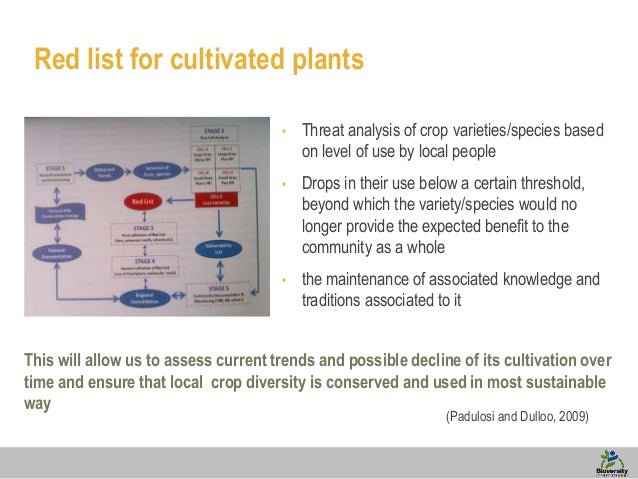
Cultivating Knowledge: A Comprehensive Guide to Creating a Thriving Native Plant Education Center
The allure of nature, the intricate dance of ecosystems, and the quiet resilience of native plants – these are the elements that can ignite a passion for conservation and environmental stewardship. Creating a native plant education center is more than just a project; it’s an investment in the future, a sanctuary for biodiversity, and a powerful tool for connecting people with the natural world. This comprehensive guide will walk you through every step of the process, from initial concept to ongoing management, ensuring your center flourishes as a beacon of knowledge and inspiration.
Why Establish a Native Plant Education Center?
In a world increasingly dominated by human development, native plant education centers play a critical role. They offer a haven for biodiversity, providing crucial habitats for local flora and fauna. They act as living laboratories, where visitors can observe, learn, and appreciate the delicate balance of ecosystems. But the benefits extend far beyond ecological considerations. Here’s why establishing a native plant education center is a worthwhile endeavor:
- Conservation: Native plants are the foundation of healthy ecosystems. Education centers raise awareness about their importance and promote conservation efforts.
- Biodiversity: They provide vital habitats for native wildlife, supporting a rich tapestry of life.
- Education: Centers offer hands-on learning opportunities, fostering a deeper understanding of the natural world.
- Community Engagement: They serve as gathering places, bringing people together to learn, share, and connect with nature.
- Environmental Stewardship: By promoting responsible practices, centers inspire individuals to become environmental stewards.
- Economic Benefits: Native plant nurseries and related businesses can thrive, creating local jobs and boosting the economy.
Phase 1: Planning and Conceptualization
The initial phase is the cornerstone of your center’s success. Careful planning and a well-defined concept are crucial for laying a solid foundation. This includes everything from defining your mission to securing funding. Here’s a breakdown of the key steps:
1. Defining Your Mission and Vision
Before you even think about plants, you need to define your purpose. What do you want to achieve? What message do you want to convey? Your mission statement should be concise and clearly articulate your goals. Your vision should paint a picture of the center’s future, outlining your aspirations and long-term objectives. Consider these questions:
- What specific ecological issues do you want to address?
- Who is your target audience (e.g., children, adults, students)?
- What educational programs and activities will you offer?
- What impact do you hope to have on the community?
2. Site Selection and Assessment
Choosing the right location is paramount. The site should be accessible, safe, and suitable for native plant cultivation. Consider these factors:
- Accessibility: Is the site easily accessible by public transportation, car, and foot?
- Size: Does the site have sufficient space for gardens, exhibits, classrooms, and parking?
- Sunlight and Soil: Assess the amount of sunlight and the type of soil. Native plants have specific requirements.
- Water Availability: Ensure access to a reliable water source for irrigation.
- Existing Vegetation: Evaluate the existing vegetation. Are there any valuable native plants to preserve?
- Environmental Conditions: Consider microclimates, wind exposure, and potential hazards.
- Permitting and Zoning: Research local regulations and zoning restrictions.
3. Developing a Site Plan
Once you’ve chosen a site, create a detailed site plan. This should include:
- Garden Layout: Plan the layout of gardens, considering plant communities, educational themes, and aesthetic appeal.
- Paths and Trails: Design paths and trails that are accessible to people of all abilities.
- Buildings and Structures: Determine the location of buildings, such as classrooms, offices, and greenhouses.
- Signage: Plan for informative signage to educate visitors about the plants and ecosystems.
- Accessibility Features: Incorporate features such as ramps, accessible restrooms, and Braille signage.
4. Budgeting and Fundraising
Creating a realistic budget is essential. Consider all expenses, including:
- Land Acquisition or Lease: If you need to acquire land.
- Site Preparation: Clearing, grading, and soil amendments.
- Construction: Buildings, structures, and pathways.
- Plant Acquisition: Purchasing native plants from reputable nurseries.
- Irrigation Systems: Installing and maintaining irrigation.
- Educational Materials: Signage, brochures, and educational programs.
- Staffing: Salaries and benefits for staff and volunteers.
- Ongoing Maintenance: Costs for maintenance, utilities, and supplies.
Explore various funding sources, such as grants, donations, corporate sponsorships, and fundraising events.
5. Legal and Organizational Structure
Decide on the legal structure of your center. Options include:
- Nonprofit Organization: This structure allows you to apply for grants and receive tax-deductible donations.
- For-Profit Business: If you plan to sell plants or offer services for profit.
- Partnership: Collaborating with other organizations or government agencies.
Establish a board of directors, develop bylaws, and obtain necessary permits and licenses.
Phase 2: Design and Construction
With the planning phase complete, it’s time to translate your vision into reality. This stage involves the physical design and construction of the education center. Meticulous planning and efficient execution are key to success.
1. Detailed Design Development
Work with landscape architects, designers, and other professionals to develop detailed plans. This includes:
- Garden Design: Choose native plant species that are well-suited to the site conditions and educational themes. Consider bloom times, plant heights, and aesthetic appeal.
- Building Design: Design buildings that are functional, sustainable, and aesthetically pleasing. Consider energy efficiency, water conservation, and natural lighting.
- Irrigation System Design: Design an efficient irrigation system that minimizes water waste. Consider drip irrigation, rain barrels, and other water-saving techniques.
- Signage Design: Create informative and engaging signage that educates visitors about the plants, ecosystems, and conservation efforts.
2. Construction and Implementation
Once the detailed designs are finalized, it’s time to begin construction. Follow these steps:
- Site Preparation: Prepare the site by clearing vegetation, grading the land, and amending the soil.
- Building Construction: Construct buildings according to the approved plans.
- Landscape Installation: Install pathways, gardens, and other landscape features.
- Planting: Plant native plants according to the garden design.
- Irrigation Installation: Install the irrigation system.
- Signage Installation: Install educational signage.
Hire qualified contractors and ensure that all work is done according to the approved plans and local regulations.
3. Sustainable Building Practices
Embrace sustainable building practices to minimize the environmental impact of your center. Consider:
- Using recycled and reclaimed materials.
- Implementing energy-efficient lighting and appliances.
- Installing solar panels or other renewable energy sources.
- Using rainwater harvesting systems.
- Designing buildings to maximize natural light and ventilation.
Phase 3: Plant Selection and Garden Establishment
Choosing the right plants is at the heart of your education center. This phase focuses on selecting native species, establishing healthy gardens, and creating educational displays.
1. Selecting Native Plant Species
Choose native plants that are well-suited to the site conditions, educational themes, and goals of your center. Consider these factors:
- Site Conditions: Select plants that thrive in the local climate, soil type, and sunlight conditions.
- Educational Themes: Choose plants that represent specific ecosystems, plant communities, or conservation topics.
- Aesthetic Appeal: Select plants with diverse colors, textures, and bloom times to create visually appealing gardens.
- Wildlife Value: Choose plants that provide food and habitat for native wildlife, such as pollinators, birds, and other animals.
- Availability: Source plants from reputable nurseries that specialize in native plants.
2. Sourcing Native Plants
Obtain native plants from reputable sources. Look for nurseries that:
- Specialize in native plants.
- Grow plants from locally sourced seeds or cuttings.
- Avoid using pesticides or herbicides.
- Offer healthy, well-grown plants.
- Provide information about plant care and maintenance.
Consider propagating plants yourself from locally sourced seeds or cuttings to ensure genetic diversity and reduce costs.
3. Garden Design and Layout
Design the garden layout to create engaging and educational displays. Consider these ideas:
- Thematic Gardens: Create gardens that represent specific ecosystems, such as prairies, woodlands, or wetlands.
- Pollinator Gardens: Design gardens that attract pollinators, such as bees, butterflies, and hummingbirds.
- Edible Gardens: Grow native edible plants to educate visitors about traditional food sources.
- Demonstration Gardens: Showcase sustainable gardening practices, such as composting, rainwater harvesting, and organic pest control.
- Accessible Gardens: Design gardens that are accessible to people of all abilities.
- Interpretive Signage: Integrate informative signage throughout the gardens to educate visitors about the plants, ecosystems, and conservation efforts.
4. Planting and Establishment
Proper planting techniques are essential for the long-term success of your gardens. Follow these steps:
- Soil Preparation: Prepare the soil by amending it with compost or other organic matter.
- Planting: Plant native plants according to the nursery’s instructions.
- Watering: Water plants regularly, especially during the establishment phase.
- Mulching: Apply mulch to conserve moisture, suppress weeds, and regulate soil temperature.
- Weed Control: Control weeds regularly to prevent them from competing with native plants.
Phase 4: Educational Programs and Activities
Education is the cornerstone of your native plant education center. This phase focuses on developing and implementing educational programs and activities that engage visitors of all ages.
1. Developing Educational Programs
Develop a variety of educational programs to meet the needs of your target audience. Consider these program ideas:
- Guided Tours: Offer guided tours of the gardens, led by knowledgeable staff or volunteers.
- Workshops: Host workshops on topics such as native plant identification, gardening techniques, and conservation practices.
- Lectures: Invite guest speakers to give lectures on topics related to native plants, ecosystems, and conservation.
- Children’s Programs: Develop programs specifically for children, such as nature walks, crafts, and hands-on activities.
- School Programs: Partner with local schools to offer educational programs for students.
- Volunteer Opportunities: Recruit volunteers to assist with garden maintenance, educational programs, and other activities.
- Online Resources: Create a website or online platform to share information about native plants, programs, and events.
2. Creating Engaging Exhibits
Design informative and engaging exhibits to educate visitors. Consider these exhibit ideas:
- Plant Identification Guides: Create displays that showcase native plant species and their characteristics.
- Ecosystem Displays: Create displays that illustrate the relationships between plants, animals, and their environment.
- Conservation Exhibits: Create exhibits that highlight conservation efforts and their importance.
- Interactive Exhibits: Incorporate interactive elements, such as touch screens, games, and activities.
- Art and Photography Exhibits: Showcase art and photography related to native plants and ecosystems.
3. Community Outreach and Partnerships
Collaborate with local organizations and community groups to expand your reach and impact. Consider these partnership opportunities:
- Local Schools: Partner with schools to offer educational programs for students.
- Community Gardens: Collaborate with community gardens to share resources and expertise.
- Environmental Organizations: Partner with environmental organizations to promote conservation efforts.
- Local Businesses: Partner with local businesses to secure sponsorships and donations.
- Government Agencies: Collaborate with government agencies to obtain permits, funding, and other support.
Phase 5: Ongoing Management and Maintenance
The success of your native plant education center depends on ongoing management and maintenance. This phase focuses on ensuring the long-term health and sustainability of the center.
1. Garden Maintenance
Regular garden maintenance is essential for keeping your gardens healthy and beautiful. Follow these maintenance practices:
- Weeding: Remove weeds regularly to prevent them from competing with native plants.
- Watering: Water plants as needed, especially during dry periods.
- Pruning: Prune plants to maintain their shape and promote healthy growth.
- Fertilizing: Fertilize plants sparingly, using organic fertilizers.
- Pest and Disease Control: Monitor plants for pests and diseases and take appropriate action.
- Mulching: Replenish mulch as needed to conserve moisture and suppress weeds.
- Soil Testing: Conduct soil tests periodically to monitor soil health and nutrient levels.
2. Building Maintenance
Maintain buildings and structures to ensure they are safe and functional. Follow these maintenance practices:
- Regular Inspections: Conduct regular inspections to identify and address any maintenance needs.
- Repairs: Make repairs promptly to prevent further damage.
- Cleaning: Keep buildings clean and tidy.
- Energy Efficiency: Maintain energy-efficient lighting and appliances.
- Landscaping: Maintain the landscaping around buildings.
3. Financial Management
Manage your finances responsibly to ensure the long-term financial sustainability of your center. Follow these financial management practices:
- Budgeting: Create and adhere to a detailed budget.
- Fundraising: Continue to seek out funding sources, such as grants, donations, and sponsorships.
- Record Keeping: Keep accurate financial records.
- Financial Reporting: Prepare regular financial reports.
- Cost Control: Implement cost-saving measures.
4. Volunteer Management
Manage your volunteers effectively to ensure their satisfaction and productivity. Follow these volunteer management practices:
- Recruitment: Recruit volunteers through various channels, such as social media, community events, and volunteer fairs.
- Training: Provide volunteers with adequate training.
- Supervision: Supervise volunteers effectively.
- Recognition: Recognize and appreciate volunteers for their contributions.
- Communication: Maintain clear and open communication with volunteers.
5. Program Evaluation
Regularly evaluate your programs and activities to ensure they are effective and meet the needs of your target audience. Follow these evaluation practices:
- Gather Feedback: Gather feedback from visitors, volunteers, and staff.
- Track Attendance: Track attendance at programs and events.
- Assess Learning Outcomes: Assess learning outcomes to determine whether programs are achieving their goals.
- Make Improvements: Use the evaluation results to make improvements to your programs and activities.
Conclusion: Cultivating a Legacy of Conservation
Creating a native plant education center is a rewarding endeavor that can have a lasting impact on your community and the environment. By following these steps, you can establish a thriving center that educates, inspires, and connects people with the natural world. Remember, it’s a journey that requires dedication, passion, and a commitment to conservation. The seeds you plant today will blossom into a legacy of knowledge, stewardship, and a deeper appreciation for the beauty and resilience of native plants for generations to come. Embrace the challenge, and watch your center flourish into a vital hub for environmental education and a testament to the enduring power of nature.



